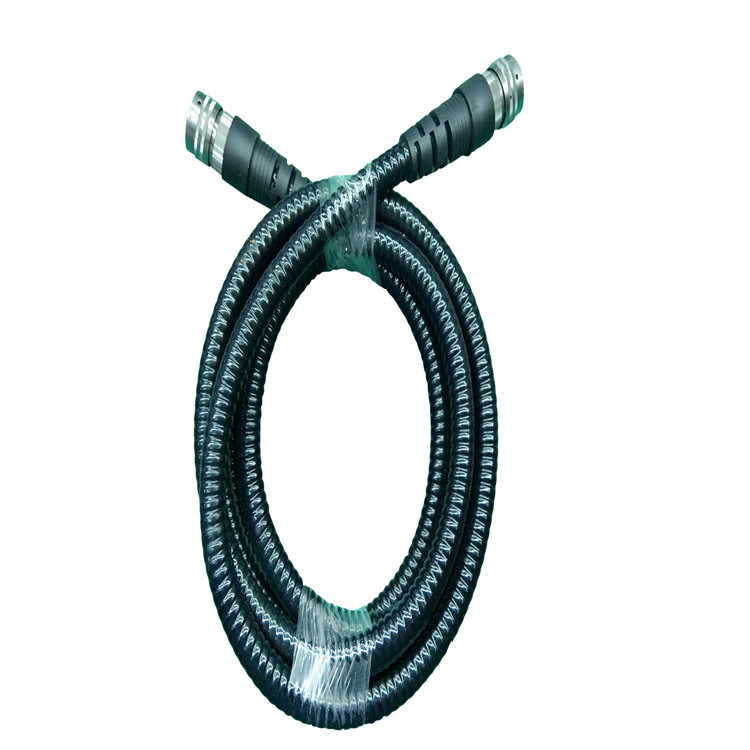Selection Criteria for Washdown-Resistant Cable Assemblies
In industries such as food processing, pharmaceuticals, healthcare, and chemical manufacturing, equipment and machinery are frequently subjected to rigorous cleaning processes involving high-pressure water jets, steam, and harsh chemical sanitizers. Cable assemblies in these environments must withstand not only mechanical stress but also repeated exposure to moisture, temperature extremes, and corrosive agents. Choosing the right washdown-resistant cable assemblies is critical to ensuring operational reliability, compliance with hygiene standards, and reduced maintenance costs.
Why Washdown Resistance Matters
Equipment in hygienic or hazardous environments requires regular cleaning to meet safety and regulatory standards (e.g., FDA, USDA, or EHEDG guidelines). However, traditional cables often degrade under these conditions, leading to:
Insulation breakdown: Water ingress or chemical exposure causes short circuits.
Connector corrosion: Metal components oxidize, leading to signal loss or power failures.
Material degradation: Cracks or swelling in jackets due to thermal cycling or chemical reactions.
Bacterial growth: Porous or damaged surfaces trap contaminants, violating hygiene protocols.
Key Selection Criteria for Washdown-Resistant Cables
1. Material Compatibility
Jacket Materials:
Thermoplastic Polyurethane (TPU): Resists abrasion, oils, and frequent temperature changes (e.g., -40°C to 125°C).
Silicone: Ideal for steam cleaning and extreme temperatures (-60°C to 200°C).
Polyvinyl Chloride (PVC): Cost-effective but limited to mild chemical environments.
Sealed Connectors:
Use overmolded connectors with IP68/IP69K ratings to block water and dust ingress.
Opt for stainless steel (316L) or nickel-plated brass housings to resist corrosion.
Food-Grade Compliance:
Select jackets compliant with FDA 21 CFR or EU 10/2011 for direct contact with food or pharmaceuticals.
2. Chemical and Thermal Resistance
Chemical Compatibility: Ensure cables resist common sanitizers like chlorine, hydrogen peroxide, and acidic/alkaline cleaners.
Thermal Stability: Verify performance under repeated steam cleaning (up to 150°C) or cryogenic washdowns.

3. Mechanical Durability
Abrasion Resistance: Jackets should withstand high-pressure sprays (up to 1,500 PSI) without cracking.
Flexibility: Use finely stranded conductors and flexible jackets to endure vibration and movement during cleaning.
Strain Relief: Reinforce cable entry points with overmolded boots or coiled cables to prevent pull-out failures.
4. Hygienic Design
Smooth Surfaces: Non-porous, easy-to-clean jackets prevent bacterial growth.
Color Coding: Use bright colors (e.g., blue or white) to detect contamination or wear.
5. Certifications and Standards
Ingress Protection (IP) Ratings: IP69K certifies resistance to high-pressure, high-temperature water jets.
UL, CSA, or CE Markings: Ensure electrical safety and compliance with regional regulations.
NSF/3A Certification: Required for equipment in food and beverage processing.
Testing Protocols for Washdown Environments
Cables should undergo rigorous testing to validate performance:
IP69K Testing: Exposure to 80°C water at 14.5 PSI from 4 inches away for 5 minutes.
Chemical Immersion Tests: Submersion in cleaning agents for 1,000+ hours to check degradation.
Thermal Shock Tests: Rapid cycling between extreme temperatures (-40°C to 125°C).
Abrasion Resistance Tests: Measured via ISO 6722 or UL 758 standards.
Case Study: Dairy Processing Plant
A dairy facility experienced frequent cable failures due to daily caustic washdowns. By switching to:
Silicone-jacketed cables with IP69K-rated connectors.
Stainless steel braided shielding for EMI protection.
FDA-compliant blue TPU jackets for easy contamination detection.
The plant reduced cable replacements by 70% and achieved compliance with EHEDG hygiene standards.
Installation and Maintenance Best Practices
Avoid Tight Bends: Maintain minimum bend radii to prevent jacket stress.
Secure Routing: Use stainless steel cable clamps or trays to minimize movement during cleaning.
Regular Inspections: Check for cracks, discoloration, or connector corrosion after each cleaning cycle.

